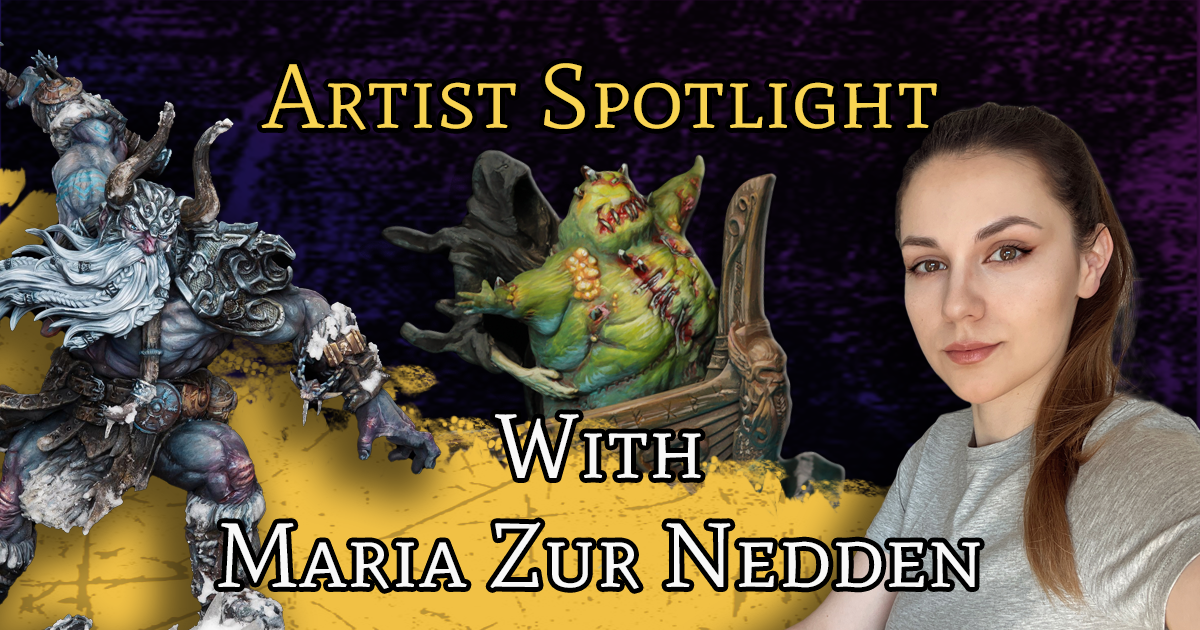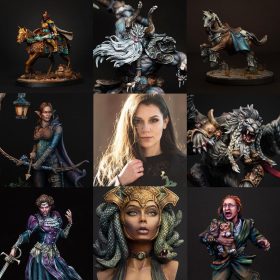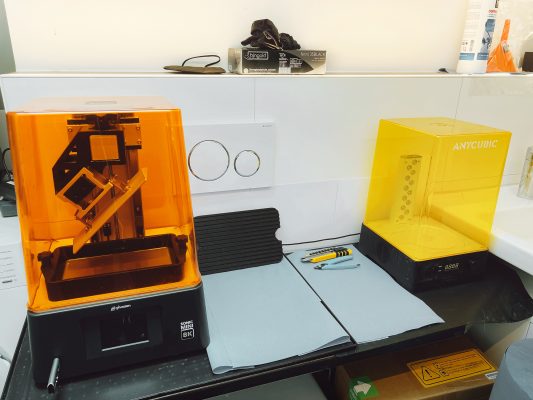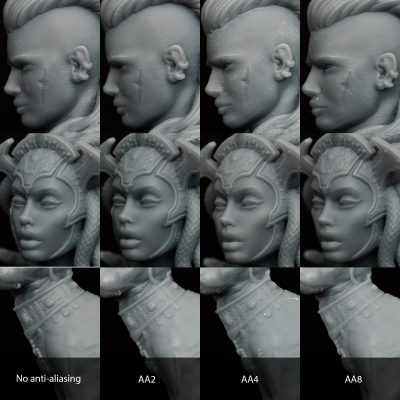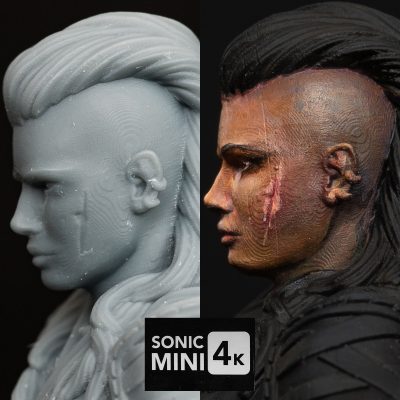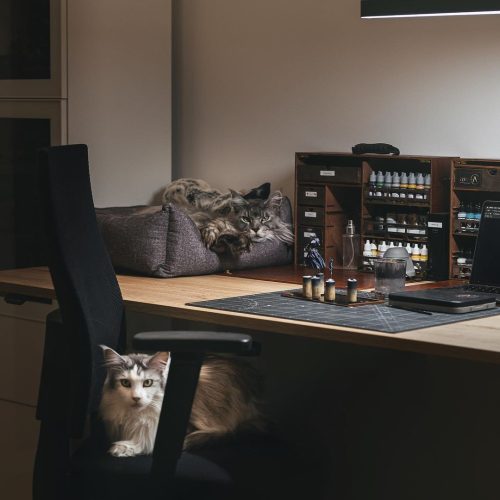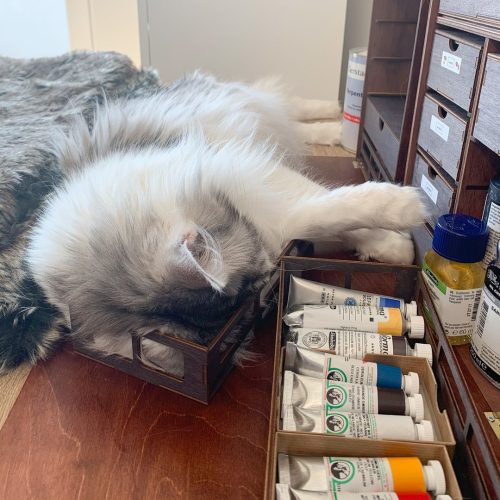Artist Spotlight, Miniature Painting Challenge, MPC #005
Artist Spotlight: Maria zur Nedden
If you ask anyone how they started painting miniatures, in most cases the answer will be “It started with wargames“. But, with the rise of 3D printing over the past years, you can meet people who started their miniature painting journeys without any game settings involved. One notable example is Maria zur Nedden. A self-taught artist who joined the miniature painting scene in 2020. She wasted no time improving her craft. By the end of 2020, her work was featured on HOLD MY DWARF Kickstarter. In 2021 she was the runner-up of the first-ever Miniature Painting Challenge. In 2022 she took first place in the Craftworld Studio painting competition. With such notable achievements as above, we’re honored to have Maria as a guest judge in the currently running Miniature Painting Challenge #005.
About The Art
If you look at her portfolio, you won’t find any space marines in there. Instead, you will find a lot of well-painted 3d printed models. Even her first published miniatures show great skill with both a 3D printer and a paintbrush. The prints are crisp and smooth, with a paint job to match. Maria is a great example of how you can paint models without using the more common “basecoat, wash, and highlight” approach. Instead, she paints them like you would a traditional painting.
Comparing her earlier projects with some more recent ones shows a great deal of improvements over time. Transitions became smoother, NMM got refined, the lights and shadows became more uniform and an overall, recognizable, style has formed. All in a span of less than 2 years. It shows how dedication and practice can help you achieve great results.
The Interview
– How would you describe what you do to people who might not know about you?
– I paint miniatures for display. That includes everything from 10mm to 32mm or 75mm to busts. Apart from that, I’m also very invested in resin 3D printing with the majority of what I paint being 3D printed.
– What do you consider the beginning of your hobby journey?
– In spring 2020 my husband convinced me that we need a resin 3D printer. Before that, we only owned an FDM printer and I made an attempt to paint FDM prints, the surface texture and lack of detail put a swift end to the experiment. In contrast to that, the prints produced by resin printers were way more suitable for painting. So I gave it another shot. While I wasn’t familiar with tabletop games like Warhammer back then, painting and drawing were already a hobby of mine, and going from 2D to 3D was a great way to get back to it after I took a break from art for a few years.
– I’ve seen that you do laser cutting, 3d printing, and painting. Is this something you do full time or is it all a hobby?
In regards to miniature painting, it is only a hobby and I don’t offer commissions. I thought about turning it into a source of additional income but I rather keep it as a hobby at this point. The only exception was for a recent Kickstarter for 3D printable models. I printed the model and took photos of the print.
– Did you study any form of art, or did it all start with miniature painting?
– Art has been a hobby of mine since I was a kid. My mom is a skilled painter and allowed me to use (some of) her professional painting supplies. I never attended art school or anything similar. The knowledge and skills that I have today accumulated over many years of practice, studying other people’s work, and the occasional art-related book. Since I started to paint miniatures, I also started following tutorials from professional painters to improve my own miniatures.
– Do you paint non-3d printed models?
– Most of the minis that I paint are 3D printed. The first time I painted a non-3D printed mini was October 2021 The Duchess by Miniac, however, she is standing on a 3D printed base and has a 3D printed cat as a familiar. The first 100% non-3D printed mini was Mineko by Kimera Models that I painted earlier this year. More non-printed minis are waiting to be painted, so these two won’t be the last. One of the reasons why I exclusively painted 3D printed models, in the beginning, was the costs. Messing up a 3D printed mini tends to be quite cheap. If all else fails I can print a new model instead of going through the whole process of stripping paint off the mini.
– Do you sculpt your own models?
– The closest I got to making my own model, was sculpting a wooden lamp post. While I hope to one day find the time to dabble into digital sculpting, right now I’m not at a point where I could make my own mini.
– What’s your resin printing setup?
– Half of our second small bathroom was turned into a 3D printing room by installing a small table. The reason for choosing it was good ventilation and a window directly above the printer. This way no resin fumes, that could be harmful to us or the cats, linger around. At the moment I have the Phrozen Sonic Mini 8K and the Anycubic „Wash and Cure“ 2.0 standing on that table, and the cupboard beneath the sink is used for storing resin bottles. Soon the Phrozen Sonic Mighty 8K (my first larger resin 3D printer) will be joining the setup, but I’m not sure how to fit it in. It might require some rearranging.
– Do you have any advice for hobbyists who want to start 3d printing?
– The topics that will need some time investment before starting are „safety“ and „learning the basics“. Make sure you know how to safely handle resin and work in a safe environment with all the appropriate safety precautions – wearing gloves, mask and/or very good ventilation, keep resin away from pets and kids, etc.. even the most beautiful 3D printed minis are not worth damaging your health.
Acquiring a good foundation of knowledge will help to achieve a good printing result and keep the frustration and the time to find a solution for a failed print to a minimum. This includes familiarizing yourself with the printer, the most important components, and how they function (leveling and cleaning the build plate, how to change and clean the FEP, etc.). In addition to that, you also need to understand the settings in a slicer software and how they affect your prints (Layer height, lifting speed, exposure time, etc.). Finally, taking a quick look at the most common issues that can cause prints to fail and how to fix them tends to be very useful. For your first prints. start with simple pre-supported models, that are proven to print without issues.
– What would be the one thing about resin printing that everyone needs to know but no one ever told you?
3D printing on its own is a hobby. It requires more time and knowledge than I initially thought. Especially if you want to dive deeper into it and aim for the best results possible, or try to print more challenging models. Cleaning up prints can be a bit messy. For me, it turned out to be a very interesting and enjoyable hobby.
– Do you have any projects that you have started but never finished, any examples, and reasons why?
– Last year I started painting busts. The first one that I decided to paint in acrylics had a lot of surface texture – every single thread of the top was sculpted. While it looked beautiful as a print and also worked well for airbrush painting, my frustration started when I switched to the brush. Thinner paint consistencies (like glazes) were a problem. They ended up behaving more like a wash than a glaze. Wet-blending, a technique that I use a lot, also was very difficult to get to work properly. In addition to that, all the sculpted textures took away a good amount of creative freedom. My enjoyment dwindled with every painting session, and I eventually decided to stop and avoid minis like that in the future.
– What scale would you recommend for beginners painters? (32mm-75mm or other)
– My general recommendation would be to go for a 32-54mm mini that has exaggerated proportions and an overall design that isn’t too complex. Larger features are easier to paint and smaller scale figures are quicker to finish. A painting project that can be finished in a few hours tends to be more approachable. On the other hand, larger scales are a better choice if eyesight is a problem or other factors make painting small details difficult or not enjoyable. In the end, each scale comes with its own challenges and what you want to start with is a matter of personal preference.
– You have worked with models from various 3D Studios and authors. Do you have any personal recommendations?
– Giving recommendations is hard since a lot of this is very much dependent on personal preference. My top three are Artisan Guild, Titan Forge, and Loot Studios. Artisan Guild and Titan Forge are my go-to for 32mm minis. Loot Studios is my go-to for 75mm minis and busts. Their designs are always beautifully sculpted. Titan Forge and Loot not only offer fantasy but also sci-fi themed minis. The modularity of Artisan Guild, and partially also Titan Forge models, allows for some creativity when building your minis.
However, there are many other great designers out there and I’m always discovering new ones. Most recently Bite the Bullet and Cripta Studios. I would suggest to check out stltop.com – they list miniature Patreons and their stores and are a good source for finding interesting designers.
– Are your cats Maine Сoon breed? Do they like to get involved when you are painting?
– Yes they are both Coons – brother and sister. Both always need to get involved with what I’m doing. No matter if I’m painting, gaming, working, studying, or by far the most exciting thing cutting up cardboard boxes. Most of the time there is at least one cat either on my desk or somewhere in my room. They will ask for cuddles, demand to sit on my lap or carry their toy over so I play with them. It is tricky to keep all the tiny cat hairs away from my minis and I have to keep a close eye on my paint water, wet-palette and brushes. Sometimes half of my painting time ends up being „cat time“ but I wouldn’t want it any other way.


